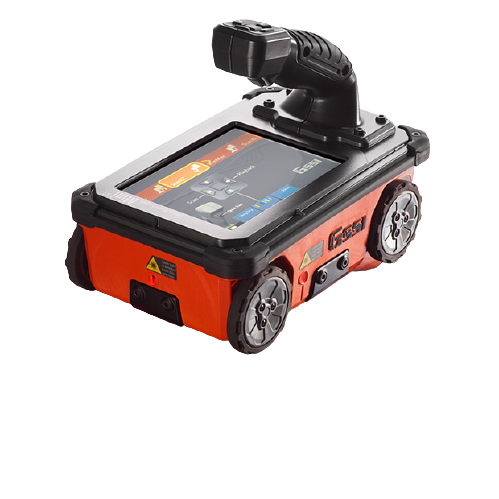Concrete Scanning: An Important Step Towards Ensuring Architectural Stability and Safety
In the world of construction and framework maintenance, the significance of concrete scanning can not be overemphasized. This thorough process holds the essential to unveiling possible dangers hidden under the surface of seemingly solid frameworks. By employing innovative innovation and methodologies, concrete scanning functions as a critical tool in ensuring that the honesty and safety of bridges and structures are promoted to the highest criteria. Nonetheless, past its surface-level implications, the duty of concrete scanning prolongs much much deeper than meets the eye.
Importance of Concrete Scanning
Concrete scanning plays an essential role in making certain the structural integrity and safety of buildings and facilities projects. By utilizing sophisticated technologies such as ground-penetrating radar (GPR) and electromagnetic induction, specialists can non-destructively evaluate concrete structures to spot possible problems, voids, embedded objects, and reinforcement design. This procedure allows very early discovery of anomalies that could jeopardize the security of a structure, avoiding pricey damages and making sure the safety and security of occupants.
Concrete scanning is especially important throughout the preparation and building and construction stages of a task. Prior to exploration, reducing, or coring right into concrete, scanning aids recognize the specific areas of rebar, post-tension cable televisions, and other embedded components, reducing the threat of accidental hits that can lead to structural weaknesses. In addition, concrete scanning help in high quality control by validating the density of concrete covers and finding any kind of discrepancies that may impact the overall resilience of the structure. Ultimately, buying concrete scanning services is not just a positive step to alleviate risks however likewise a fundamental step towards keeping the long-lasting safety and stability of buildings and infrastructure.
Modern Technology for Concrete Assessment

Benefits of Very Early Discovery
Prompt detection of structural issues can substantially alleviate threats and guarantee the durability of building projects. By identifying potential issues early on in the building and construction procedure, stakeholders can take aggressive procedures to resolve concerns prior to they intensify into larger and more costly problems. Among the vital advantages of early detection is the prevention of architectural failings, which can position severe security risks and result in job hold-ups and economic losses.
Moreover, very early discovery enables prompt repair services and maintenance, which can help expand the life-span of the framework. By attending to issues promptly, building and construction groups can avoid expensive repairs and even the requirement for premature substitute of blog here structural parts. This positive approach not just conserves money and time however also improves the general safety and sturdiness of the building task.
Furthermore, early discovery can improve task planning and decision-making by giving stakeholders with useful insights right into the condition of the structure. Equipped with this information, job supervisors can make enlightened options regarding building and construction timelines, materials, and techniques, leading to more efficient and effective job end results.
Guaranteeing Architectural Stability
Making certain the architectural security of a construction project is paramount to its safety and longevity. Concrete scanning plays a vital duty in making sure structural stability by spotting prospective problems such as spaces, delamination, or reinforcement deterioration that can jeopardize the integrity of the structure over time.
By making use of innovative scanning modern technologies like ground-penetrating radar (GPR) and electro-magnetic induction, building and construction specialists can non-invasively evaluate concrete structures to identify locations of problem under the surface area. This positive approach permits the very early detection of weaknesses or defects, making it possible for prompt repairs or support to stop structural failures.
Routine concrete scanning during different building and construction stages and throughout the my review here life cycle of a structure can aid keep its security, alleviate risks, and make certain the security of residents. By prioritizing structural stability with concrete scanning, construction tasks can enhance their strength and longevity, ultimately adding to greater safety and long life.
Avoiding Crucial Failings
Implementing routine examinations, such as concrete scanning, can reveal covert problems like spaces, cracks, or rust that could jeopardize the stability of a structure. By utilizing advanced scanning innovations like Ground Passing through Radar (GPR) or Concrete X-ray, designers can non-destructively examine the problem of concrete and determine weak factors that call for support or repair service.

Conclusion
In conclusion, concrete scanning plays an important duty in making certain structural integrity and safety by making use of sophisticated modern technology for very early detection of potential issues. This aggressive method assists avoid essential failures and makes certain the stability of frameworks. It is crucial to focus on concrete assessment as a conventional method to protect the longevity and safety and security of buildings and infrastructure.
Concrete scanning plays an essential duty in guaranteeing the structural honesty and security of buildings and framework projects. In addition, concrete scanning help in quality control by validating the thickness of concrete covers and detecting any type of disparities that might affect the general resilience of the framework. Concrete scanning plays an important duty in making certain architectural stability by finding prospective problems such as voids, delamination, or support deterioration that might endanger the integrity of the framework over time.

In conclusion, concrete scanning plays a critical function in guaranteeing architectural integrity and safety and security by making use of sophisticated modern technology for very early discovery of possible concerns.